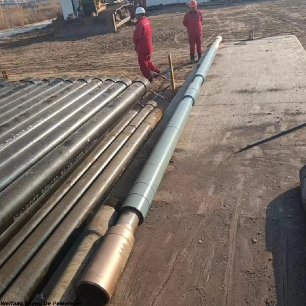Shock absorbers play a critical role in many mechanical systems by controlling unwanted vibrations, impacts, and oscillations. Their fundamental purpose is to absorb kinetic energy and convert it into heat or another form of energy to smooth motion and protect components from damage. Two common types of shock absorbers used across various industries are gas shock absorbers and hydraulic shock absorbers. Although they share the core function of dampening motion, they operate on different principles and are suited for different applications. Understanding their differences is essential when selecting the right shock absorber for specific operational needs.
Overview of Hydraulic Shock Absorbers
Hydraulic shock absorbers primarily use hydraulic fluid (oil) as the working medium to absorb and dissipate energy. Inside the shock absorber, the piston moves through a cylinder filled with oil, forcing the fluid through small orifices or valves, which creates resistance. This resistance slows down the piston movement and effectively absorbs shock and vibration energy.
Hydraulic shock absorbers are widely used in oilfield equipment, heavy industrial machinery, construction vehicles, and engineering equipment where heavy loads and harsh conditions demand durable and reliable damping. They are favored for their ability to provide consistent, smooth damping over a broad range of impact intensities.
Overview of Gas Shock Absorbers
Gas shock absorbers, in contrast, use compressed gas—typically nitrogen or air—as the primary medium for energy absorption. The compressed gas acts as a spring, compressing and decompressing as the piston moves within the cylinder. The gas pressure provides resistance to piston movement, while hydraulic fluid inside still offers damping by controlling flow through valves. This combination allows gas shock absorbers to respond quickly to impacts and maintain consistent damping even under varying loads.
Gas shock absorbers are commonly found in automotive suspension systems, motorcycles, and lightweight machinery where rapid response, compact size, and lower weight are important. Their ability to resist fade under high-temperature conditions makes them popular for performance vehicles and dynamic applications.
Structural Differences
The fundamental structural difference lies in the working medium and internal design:
Hydraulic Shock Absorbers: These shock absorbers use hydraulic oil contained within a completely sealed chamber as the primary working medium. The piston and cylinder assembly is precisely engineered to control the flow of this hydraulic fluid, forcing it through small orifices and valves. This controlled flow creates viscous resistance, which dissipates kinetic energy as heat, effectively absorbing shocks and vibrations. High-quality seals are an essential component in hydraulic shock absorbers, as they prevent oil leakage and protect the internal system from contamination by dirt or moisture. The overall structure is designed with a focus on durability and strength to withstand heavy mechanical loads, extreme pressures, and harsh operating conditions commonly found in industrial and oilfield environments. Materials used are typically robust alloys and hardened steels to resist wear, corrosion, and deformation, ensuring reliable, long-lasting performance.
Gas Shock Absorbers: In contrast, gas shock absorbers contain compressed gas—most commonly nitrogen—alongside hydraulic oil. The internal chamber is divided to separate the gas from the oil, preventing the fluid from foaming and maintaining consistent internal pressure. This separation is achieved through a floating piston or bladder within the shock absorber. Specialized seals and valve systems regulate the interaction between the compressed gas and hydraulic fluid, ensuring smooth and consistent damping action. The design emphasizes rapid response to dynamic loads and minimizes fluid aeration, which helps maintain performance under high-frequency vibrations. Gas shock absorbers are often lighter and better suited for applications requiring quick reaction times and adaptive damping.
Working Principle Differences
The mechanisms of energy absorption differ between the two types:
Hydraulic Shock Absorbers: These devices absorb energy primarily through viscous resistance created by the movement of hydraulic oil inside the sealed chamber. When the piston moves due to an external force or impact, the hydraulic oil is forced to pass through narrow passages or specially designed valves within the shock absorber. This restricted flow generates resistance, which slows the piston's movement and converts the kinetic energy into heat that dissipates through the fluid. The efficiency and response time of the damping effect depend largely on the viscosity of the hydraulic oil and the size and shape of the orifices or valves. Because this damping mechanism relies on fluid dynamics, hydraulic shock absorbers provide a steady, smooth resistance that is especially well-suited to absorbing slow or moderate-speed impacts often encountered in industrial, construction, and oilfield environments.
Gas Shock Absorbers: In contrast, gas shock absorbers use a dual mechanism combining gas compression with hydraulic damping. When the piston moves inside the absorber, the compressed gas—usually nitrogen—contracts and expands like a spring, temporarily storing and releasing energy. Meanwhile, the hydraulic oil controls the rate of piston movement by flowing through valves, providing viscous damping similar to that in hydraulic shock absorbers. This dual-action system enables gas shock absorbers to respond more rapidly to changes in pressure and adapt their damping characteristics dynamically. This makes them particularly effective in applications with rapid, high-frequency impacts and vibrations, such as automotive suspensions and precision machinery, where quick response and consistent performance are critical.
Performance Comparison
Durability and Maintenance:
Hydraulic shock absorbers typically require less frequent maintenance in heavy-duty environments because of their robust construction and stable fluid system. However, they may be more prone to fluid leaks over time if seals degrade. Gas shock absorbers often require more careful maintenance due to the pressurized gas system and potential for gas leakage or foaming, which can reduce performance.
Temperature Adaptability:
Gas shock absorbers handle temperature changes better because gas pressure compensates for fluid expansion and contraction, reducing the risk of cavitation and fade during prolonged use at high temperatures. Hydraulic shock absorbers can experience viscosity changes in the fluid with temperature fluctuations, potentially affecting damping characteristics.
Response to Vibration and Impact:
Gas shock absorbers generally provide quicker response to high-frequency vibrations and rapid impacts, making them ideal for dynamic environments like vehicle suspensions. Hydraulic shock absorbers excel in damping heavy, slow-moving impacts and sustained loads, common in industrial machinery and oilfield equipment.
Application Suitability
Hydraulic shock absorbers are best suited for:
Heavy industrial machinery such as drilling rigs, construction equipment, and manufacturing lines.
Oilfield operations where consistent, controlled damping under extreme load and pressure conditions is essential.
Environments with high mechanical stress and slower impact velocities.
Gas shock absorbers are ideal for:
Automotive and motorcycle suspensions requiring fast response and light weight.
Equipment with rapid, repetitive vibration where fade resistance is critical.
Lightweight or compact machinery where size and quick damping are priorities.
Cost and Maintenance Considerations
Manufacturing hydraulic shock absorbers involves high-strength materials and precision machining, which can raise initial costs, but their durability and relatively simple fluid system often mean lower lifetime maintenance expenses.
Gas shock absorbers may have a lower upfront cost for smaller applications but can incur higher maintenance due to gas leakage, seal replacement, and the need to manage gas pressure regularly. Their service life depends significantly on proper handling and environmental conditions.
Conclusion
The core difference between gas and hydraulic shock absorbers lies in their working mediums and energy absorption mechanisms. Hydraulic shock absorbers use viscous fluid resistance to provide stable, controlled damping suited for heavy-duty, slow-to-moderate speed impacts, making them essential in oilfield and industrial applications. Gas shock absorbers rely on gas compression combined with hydraulic damping, delivering rapid response and adaptability favored in automotive and lightweight machinery applications.
Choosing the right shock absorber depends on operational requirements, including load conditions, impact frequency, temperature range, and maintenance capacity. Understanding these differences ensures optimal performance, longevity, and cost-efficiency for your equipment.
For tailored solutions and expert advice on hydraulic shock absorbers designed to meet rigorous oilfield demands, consider contacting Weifang Shengde Petroleum Machinery Manufacturing Co., LTD. Their expertise and advanced manufacturing capabilities provide durable, high-performance products that improve operational safety and efficiency.















